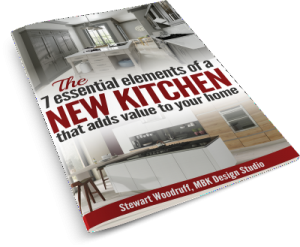With price rises looming on everything from materials, appliances, fixtures and fittings, energy to food – now may feel like a scary time to embark on a large renovation project. In the hopes of easing your worries, I’ve asked the experts for advice on how to buy a kitchen during a cost-of-living crisis.
If you’ve just bought a doer upper, or you’re fed up with your dated kitchen, we totally understand how you might be feeling right now. While some may have decided to put their projects on pause, others are wanting to press on with creating their dream home, but are worried to do so in the current climate. If this sounds like you, then here’s our top tips on how to buy a kitchen during a cost-of-living crisis
Be honest about your budget
Consumers and businesses alike are having to tread more carefully with the cost-of-living crisis. So it’s important to be honest with your retailer if you have any worries,
During any initial planning meetings, outline any concerns you may have. An independent kitchen specialist will be honest with you and offer guidance and advice in making the right choices.
Be open and discuss your budget with your retailer early on in your discussions. This will ensure your retailer can meet your expectations.
It’s a common misconception that a retailer may increase their prices if you have a healthy budget. However, this is simply not true, the kitchen market is very competitive and independent kitchen specialists will sell their products at a fair and honest price achieving a very similar tactile aesthetic. It’s wise to explore all options and where they sit against your budget at the outset.
Look to compromise
If the quote is more than you expected, really think about what you need and what you can live without. Focus on the things that will really affect your day-to-day life and invest in those. For elements that might not be as important to you, try to opt for something a little less expensive.
It’s also important to be aware that prices are rising across the trade industry. Lock in your quotes now and try to confirm your booking, or order, before your quote runs out. Otherwise, you might find that the price goes up.
With any quote you receive, we recommend having a contingency budget of 20%. This is really important if you find your plans need adjusting, something needs to be replaced, or goes wrong down the line.
More on how to buy a kitchen during a cost-of-living crisis
By seeking out the help of kitchen designers, they may also be able to help you shave money off your quote, but still get a similar look.
Cabinetry and doors represent a big part of the budget when buying a new kitchen and this cost may seem daunting when starting a kitchen project, particularly in the current climate.
What some people may not realise is that you can save money, and still achieve a premium aesthetic. Choose carefully the type of door material used as these vary in price. A good kitchen retailer will guide you on this.
For example, by choosing matt laminate doors over a more premium matt lacquer option you could save around 25% on your kitchen furniture, while also achieving a very similar tactile aesthetic. It’s wise to explore all options and where they sit against your budget at the outset.
Buying a kitchen is all about personal choice
Of course, where you should invest, or save, is a totally personal choice based on individual needs. Everyone should consider what areas or items they will use the most, as well as what is most important for them to have in a kitchen space
Worktops are a great place to invest in as they are consistently used and can also help give more affordable kitchens a more premium look. Quartz and granite are two great durable and long-lasting options.
Other areas to invest in are similarly ‘high-use’ products such as the kitchen sink, taps or even handles.
However, if you are a keen cook, perhaps you would prefer to invest in appliances, and spend less on cabinetry. Your kitchen designer will help you prioritise where you should spend your budget.
Remember, while it may seem expensive now, investing in a kitchen that will last a lifetime, that won’t be replaced within 10-15 years, will also mean you have spent wisely.
The final design
Look at your finished design and see if there’s any way of reducing costs, without sacrificing practicality. For example, using cupboards instead of drawers is a great way of cutting costs, as they can be expensive. Try to have only as many as you really need.
Open shelving is also a much more affordable option. Dawn explains: “Stylistically, this look can also make the kitchen space feel lighter and brighter. They break up the density of wall cabinets and grant you a place to display favoured items such as china or artwork.”
Shop around for finishing’s like handles or taps to find the best price available, too.
Jo Sargent, sales and marketing director at Franke UK agrees. She says: There are always ways to shop smarter and trim costs depending on where you’re willing to compromise.
But do your research for brands that you trust, who offer warranties and after sales service. This is very important down the line long after your kitchen has gone in.
How to buy a kitchen during a cost-of-living crisis: summary
If you’re about to buy a kitchen during a cost-of-living crisis, it’s important you do your research. Get at least three itemised quotes and compare them like for like. Talk to your designers about where you should invest, or compromise if needs be.
Also, cover all eventualities before signing on the dotted line, and make sure you’re completely happy with your design. Last minute changes could be costly.
We wish you good luck with your project.



